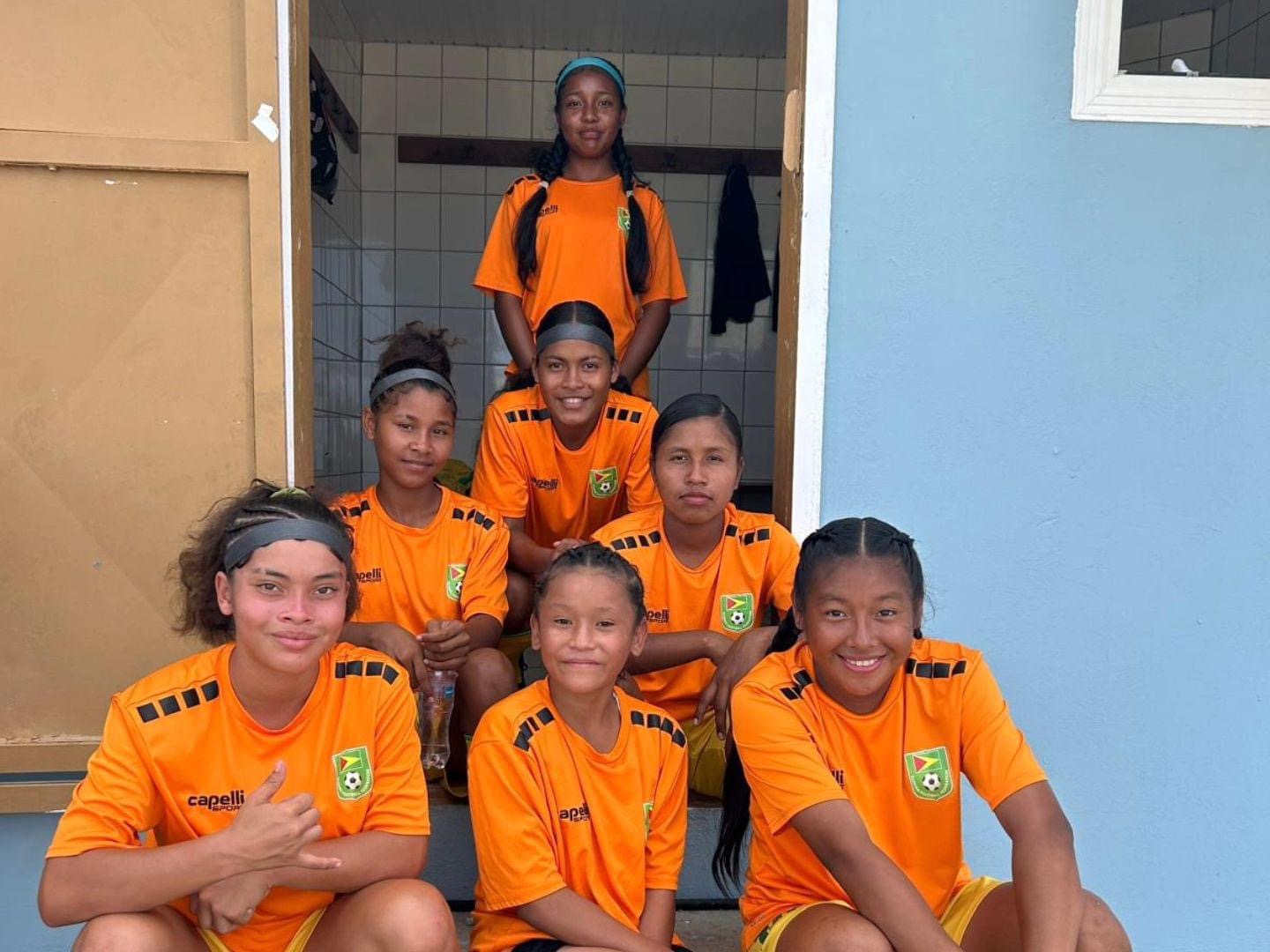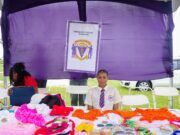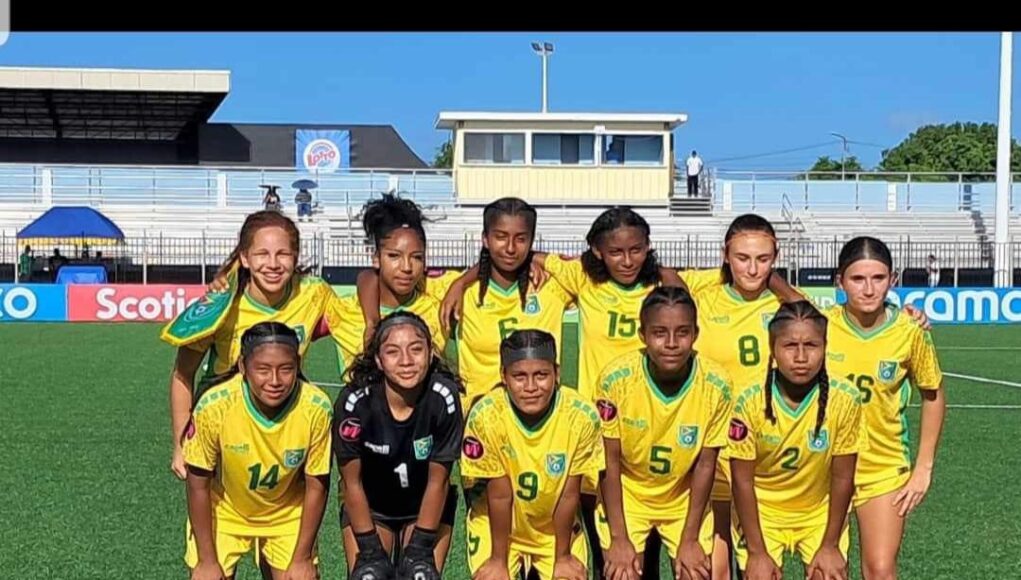By Sueann Wickham
Guyana recently witnessed a historical moment in the field of football, particularly for indigenous communities that have long faced underrepresentation in the sport. Eleven indigenous girls were able to represent Guyana as part of the under-15 girls national team.
The squad included players from diverse regions across Guyana: Kimora Edwards from Waramadong Village, Aliyah John from Annai Village, Sara Ernest from Deep South Rupununi, Lehiana Bengamin from St. Ignatius Village, Veronica Chatta from Santa Rosa, Jada La Cruz and Allia Henry from Waramuri Village, Sabana Simon from St. Cuthbert’s Mission, Erin Peneux from Siparuta Village, Tanya Devair from Orealla Village, and developmental player Sonia Simon, also from St. Ignatius Village.
What is historical about this you may ask? This is the largest indigenous representation the country has seen on a national level.
What makes it all more interesting is that the indigenous Junior Lady Jaguars were able to make a name for Guyana on the international stage after competing in the 2024 CONCACAF U-15 Girls’ Championship, leading the national team to a remarkable second-place finish.
The impact of this historic feat is not limited to the pitch—it reverberates through the communities these young girls call home, and can possibly inspire a new generation of athletes.
During an exclusive interview with the Guyana Standard, Andrea Johnson, Head of the Women’s Football Association, shed light on the influence that these young indigenous athletes have had on the team and the country at large. “The inclusion of a large number of indigenous girls has not only reshaped the composition of our team but has also changed the dynamics within the squad,” Johnson shared.
“Our Indigenous girls brought unique perspectives and different playing styles or approaches to the game, influenced by their communities’ traditional games or local football styles,” she added.
Johnson emphasized that the cultural diversity brought by the indigenous players created an environment where traditions and values were shared and respected. This cultural exchange she said, played a vital role in strengthening the bonds between the players, creating a sense of unity and solidarity that went beyond their performances on the field. “These girls come from remote villages where football has become a growing passion,” Johnson noted.
She said, “The support of their communities throughout the GFF/Blue Water Shipping Competition and into the encampment of the team, served as a powerful motivator, encouraging our Indigenous girls to push themselves and achieve their goals, knowing that they are role models for others.”
From a purely athletic perspective, Johnson pointed out that the indigenous girls introduced a set of skills and abilities that enhanced the team’s performance. Their natural athleticism and agility allowed them to excel in various aspects of the game, particularly dribbling and maneuvering in tight spaces.
During matches in Aruba, she said, “it was clear that their style of play, which is rooted in the local games they grew up playing, added an unpredictable element to our tactics. They could slip past defenders with ease, making them a formidable presence on the pitch.”
One of the standout players, Kimora Edwards from Waramadong Village, Region Seven, displayed impressive leadership throughout the tournament. In high-pressure situations, Edwards organized the team’s defense, communicated effectively, and kept her teammates calm and focused, according to Johnson. “Kimora stepped up when it mattered most,” she said with pride.
The effect of the indigenous players extended far beyond the team itself. Their inclusion sparked a new level of engagement from local communities, particularly those in indigenous regions. These girls became symbols of hope, proving that with hard work and determination, they could stand shoulder to shoulder with their peers on an international stage. “The pride that these communities feel is immense,” Johnson shared. For many, this was the first time they had seen someone from their village represent Guyana at such a high level, which has changed the way they view football. Johnson said she has no doubt that it will inspire even more girls to pursue the sport and it was no small feat for Guyana.
It was noted that Guyana is sadly a country where indigenous communities often face systemic barriers to access opportunities in mainstream sports. Football in particular has long been dominated by urban centers, where facilities, coaching, and exposure are more readily available.
Johnson said the success of these 11 girls shines a light on the untapped potential that exists within the indigenous population. She expressed hope that this achievement will lead to greater investment in football development programmes within indigenous communities, ensuring that these young players are not an anomaly but part of a growing movement of talent from all corners of the country.
Johnson also outlined several goals for the team as they continue to build on this diverse and inclusive roster. “We want to keep pushing forward,” she said.
“As we continue to build on the diverse and inclusivity of our U-15 girls, our future goals or aspirations would be to win international tournaments such as the Concacaf U-15 Girls Championship, establish a legacy of excellence, increase representation of indigenous players, fostering player development and growth and strengthening community and cultural connections among others,” she added.
The 2024 Concacaf Girls’ U-15 Championship is the largest ever of its kind and features 36 Concacaf nations divided into three leagues. Guyana’s Junior Lady Jaguars competed in League C among 12 teams. They were able to go through the championship undefeated until the final game against host nation, Aruba.
The 18-member squad comprised a mix of local and overseas-based players, many of which were standout talents from the recently concluded Guyana Football Federation-Blue Water Shipping Under-15 Girls’ National Secondary School Championship.













